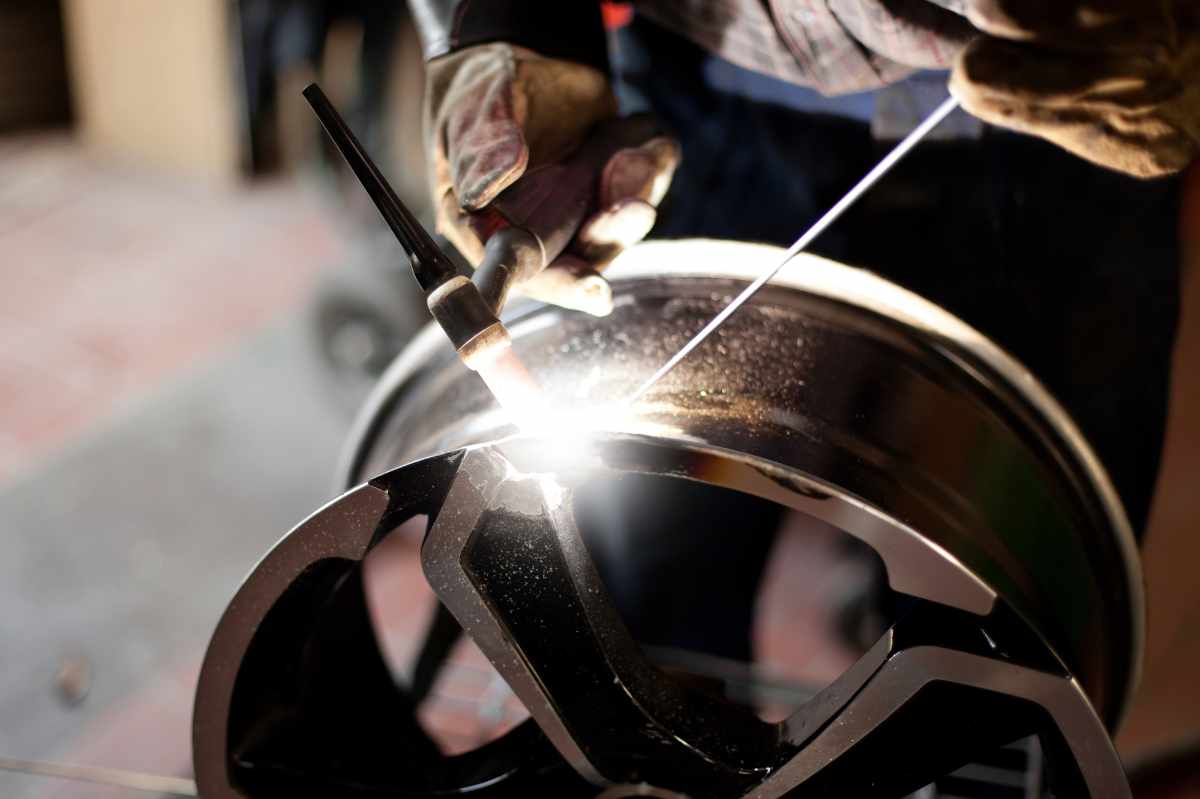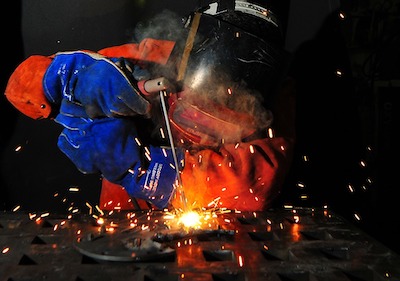Everything about Welding: Secret Insights Into Techniques and Ideal Practices for Success
Welding includes a variety of methods, each fit for particular products and applications. Understanding these methods, such as GMAW, SMAW, and TIG, is necessary for achieving ideal outcomes. Furthermore, the appropriate equipment and safety techniques can not be neglected. As prep work and troubleshooting play important duties in the welding procedure, understanding these elements can considerably improve the quality of the last product. What are the key aspects that assure a successful weld?
Understanding Different Welding Techniques
Welding methods include a range of techniques, each suited to specific applications and products. Among one of the most common methods are Gas Metal Arc Welding (GMAW), Shielded Steel Arc Welding (SMAW), and Tungsten Inert Gas Welding (TIG) GMAW, additionally called MIG welding, is popular for its speed and versatility, making it optimal for thin materials. SMAW, or stick welding, is favored for its simpleness and performance in exterior environments, especially with thicker metals. TIG welding uses accuracy and control, making it suitable for detailed job and non-ferrous steels (Welding). Each strategy has its distinct advantages and considerations, permitting welders to select the best method based upon the project's requirements, product kind, and preferred outcomes. Recognizing these strategies is important for successful welding
Essential Welding Tools and Devices
While different welding techniques call for details skills, the appropriate devices and tools are similarly essential for attaining high quality outcomes. Vital welding equipment includes welding equipments, which vary depending on the method-- such as MIG, TIG, or stick welding. Safety equipment, including safety helmets, gloves, and aprons, guarantees safety and security and convenience during the process. Additionally, clamps and fixtures help safeguard materials in location, guaranteeing accuracy in welds. Consumables like welding rods, cable, and shielding gas are likewise critical parts that affect the quality of the weld. Devices such as cutters and grinders help with surface area preparation and post-weld finishing, contributing to an expert outcome. Buying premium devices inevitably enhances the effectiveness and efficiency of welding jobs.
Safety Practices in Welding
Proper safety practices are important in the welding market to shield employees from possible hazards. Welders must use appropriate individual safety tools (PPE), consisting of headgears with correct shading, handwear covers, and flame-resistant garments. Ample air flow is essential to minimize exposure to harmful fumes and gases created during the welding process. Additionally, workers must be learnt the correct handling of welding tools to avoid accidents. Fire precaution, such as keeping combustible materials away from the welding location and having fire extinguishers easily available, are required. Routine assessments of devices and offices can help determine possible dangers prior to they bring about mishaps. By adhering to these security techniques, welders can produce a safer working atmosphere and decrease risks connected with their profession.
Readying Materials for Welding
Preparing products for welding is a crucial step that substantially influences the high quality and honesty of the last item (Belgrade Welding). Correct preparation entails cleaning the surfaces to eliminate impurities such as oil, rust, and dust, which can endanger the weld. Methods such as grinding, sanding, or utilizing solvents are commonly used to attain a tidy surface. Furthermore, making certain that the materials mesh snugly is necessary; gaps can bring about weak welds. It's likewise important to consider the placement and positioning of the elements, as this will certainly impact the convenience of welding and the last end result. Ultimately, selecting the suitable filler material and making sure compatibility with the base steels is important for accomplishing strong, sturdy welds
Tips for Getting High-Quality Welds
Accomplishing high-quality welds requires attention to information and adherence to ideal methods throughout the welding procedure. Appropriate joint preparation is essential, ensuring surface areas are complimentary and tidy from impurities. Selecting the appropriate filler product and welding strategy based upon the base steels is critical for ideal bonding. Maintaining regular travel rate and angle while welding can stop flaws and promote harmony. Furthermore, controlling warmth input is important; extreme heat can lead to bending and weakened joints. Consistently examining the welds during the procedure permits for instant changes if essential. Utilizing suitable post-weld therapies, such as cleaning and tension relief, can enhance the longevity and integrity of the weld, eventually making sure an effective end result.
Fixing Usual Welding Issues
Welding usually presents challenges that can affect the top quality and honesty of the end product. Typical problems such as porosity, inconsistent weld grains, and getting too hot can arise, each calling for specific repairing strategies. Comprehending these troubles is essential for welders to boost their skills and accomplish ideal results.
Porosity Troubles Described
Although porosity can commonly be ignored, it remains a critical problem in welding that can compromise the integrity of a completed item. Porosity refers to the visibility of small gas pockets within the weld bead, which can damage the joint and lead to premature failing. This problem normally occurs from contaminants, wetness, or improper shielding gas protection during the welding process. To mitigate porosity, welders need to verify that the base materials are completely dry and clean, utilize ideal securing gases, and preserve consistent welding specifications. On a regular basis evaluating the devices and atmosphere can also help identify potential concerns prior to they manifest in the weld. Dealing with porosity effectively is crucial for accomplishing strong, durable welds that fulfill high quality requirements.

Irregular Weld Beans
Irregular weld beads can greatly influence the top quality and strength of a completed item. Different factors contribute to this concern, including incorrect traveling rate, incorrect click here amperage settings, and inconsistent electrode angles. When the welder relocates also quickly, a grain may appear narrow and do not have penetration, while relocating as well slowly can trigger too much accumulation. In addition, using the wrong amperage can cause either undercutting or excessive spatter, both of which compromise weld honesty. The welder's strategy, such as irregular lantern movement, can likewise cause unequal bead look. To alleviate these issues, welders should concentrate on maintaining consistent, controlled motions and making sure appropriate tools setups to accomplish uniformity in their welds. Consistency is vital to accomplishing solid and trusted welds.
Overheating and Warping Issues
Extreme heat during the welding process can lead to substantial getting too hot and contorting problems, affecting the structural integrity of the workpiece. These troubles usually show up as distortion, which can endanger placement and fit-up, making further assembly challenging. Aspects adding to overheating consist of the option of welding criteria, such as voltage and travel rate, along with the kind of material being welded. To reduce these issues, welders should maintain regular traveling speed and ideal heat input while keeping an eye on the workpiece temperature level. Furthermore, pre-heating or post-weld warm treatment can aid relieve stresses created by fast cooling - Montana Mobile Welding and Repair Belgrade Fabrication. Routine inspection and adherence to finest practices are necessary in stopping getting too hot and making certain the long life and dependability of welded frameworks
Frequently Asked Concerns
What Are the Career Opportunities in the Welding Industry?
The welding sector provides diverse profession opportunities, including settings as welders, designers, educators, and assessors. Experts can operate in manufacturing, building and construction, aerospace, and vehicle sectors, profiting from solid demand and competitive wages in numerous duties.
Just How Can I Enhance My Welding Speed Without Giving Up Top Quality?
To enhance welding rate without sacrificing quality, one should exercise effective strategies, maintain tools, maximize setups, and improve hand-eye coordination. Routine training and seeking feedback can likewise considerably add to achieving much faster, top quality welds.
What Accreditations Are Available for Welders?
Countless certifications exist for welders, consisting of those from the American Welding Culture (AWS), the National Center for Building And Construction Education and Research Study (NCCER), and numerous industry-specific organizations. These qualifications boost employability and show ability efficiency.
Just How Does Welding Impact the Features of Metals?
Welding influences the residential properties of steels by altering their microstructure, which can lead to modifications in ductility, hardness, and stamina. Warmth input and air conditioning prices during the process considerably impact these material features.
Can I Bonded Dissimilar Metals With Each Other?
